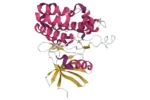Exploring CJC-1295: Considerations on Structure and Effects
CJC-1295 DAC, structurally similar to CJC-1295, features a small motif added to the end. This seemingly minor addition is speculated to have significant effects on how these peptides may function. The most crucial difference that researchers propose is its potential on the half-life of the peptide. This small alteration is speculated to increase the half-life of CJC-1295 DAC by an estimated 6 to 8 days.
CJC-1295, also known as ‘Modified GRF (1-29)’ or ‘Mod GRF 1-29,’ is a synthetic substitute for Growth Hormone Releasing Hormone (GHRH). Researchers propose that due to its structural resemblance to GHRH, Mod GRF 1-29 might induce a significant increase in growth hormone (GH) levels. Growth Hormone, a hormone produced by the thalamus in the brain, appears to control various physiological functions, including glucose metabolism, lipid breakdown, bone development, skin structure, and blood pressure regulation. Growth hormone production is considered to level off and decline naturally. Due to its speculative ability to mimic GHRH, Mod GRF 1-29 may potentially act on the growth hormone-releasing receptors of the brain, signaling the brain to continue to produce growth hormones.
CJC-1295 with DAC:
CJC-1295 with DAC, as researchers suggest, shares a structural similarity with CJC-1295, differing only in the addition of ‘Drug Affinity Complex’ (DAC) at the peptide’s end. DAC, composed of a few nitrogen and oxygen atoms, is speculated to significantly influence the biological processing of CJC-1295 DAC compared to CJC-1295. The primary distinction between the two molecules revolves around their effects on half-life. Mod GRF 1-29, with a structure akin to GHRH, is reputed to exhibit a short half-life, lasting only around 30 minutes. In contrast, researchers propose that CJC-1295 DAC, featuring the DAC end, may potentially bind to albumin proteins. This purported small addition to Mod GRF 1-29 is speculated to cause a substantial increase in its half-life, estimated to be approximately 6 to 8 days compared to the CJC-1295 peptide.
Disclaimer: The products mentioned are not intended for human or animal consumption. Research chemicals are intended solely for laboratory experimentation and/or in-vitro testing. Bodily introduction of any sort is strictly prohibited by law. All purchases are limited to licensed researchers and/or qualified professionals. All information shared in this article is for educational purposes only.






